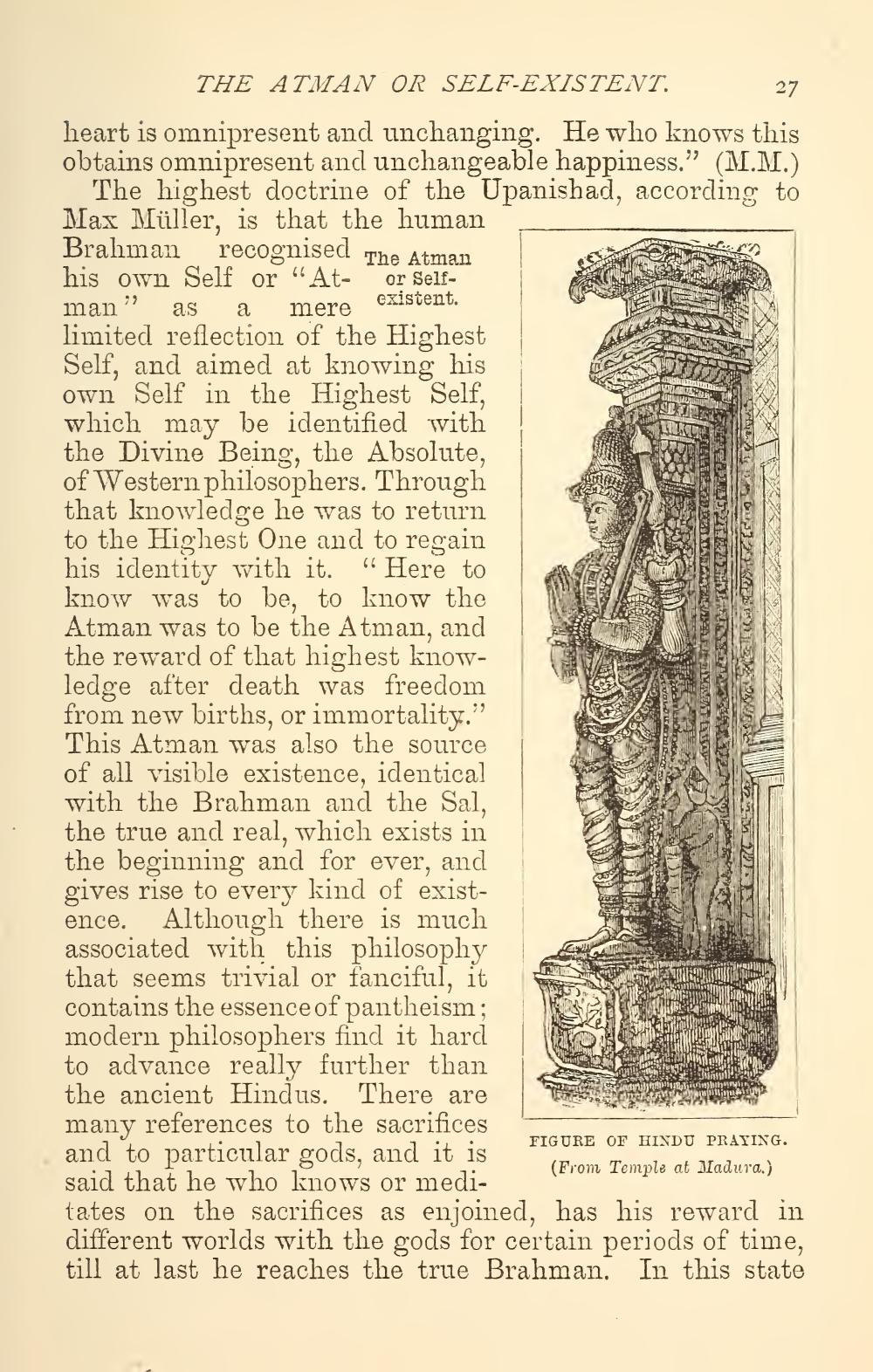________________
ye
HA
THE ATMAN OR SELF-EXISTENT. 27 heart is omnipresent and unchanging. He who knows this obtains omnipresent and unchangeable happiness.” (M.M.)
The highest doctrine of the Upanishad, according to Max Müller, is that the human Brahman recognised The Atman his own Self or “At- or Selfman” as a mere existent. limited reflection of the Highest Self, and aimed at knowing his own Self in the Highest Self, which may be identified with the Divine Being, the Absolute, of Western philosophers. Through that knowledge he was to return to the Highest One and to regain his identity with it. “Here to know was to be, to know the Atman was to be the Atman, and the reward of that highest knowledge after death was freedom from new births, or immortality.'' This Atman was also the source of all visible existence, identical with the Brahman and the Sal, the true and real, which exists in the beginning and for ever, and gives rise to every kind of existence. Although there is much associated with this philosophy that seems trivial or fanciful, it contains the essence of pantheism; modern philosophers find it hard to advance really further than the ancient Hindus. There are many references to the sacrifices
FIGURE OF HINDU PRAYING. and to particular gods, and it is
(Fron Temple at Madura.) said that he who knows or meditates on the sacrifices as enjoined, has his reward in different worlds with the gods for certain periods of time, till at last he reaches the true Brahman. In this state
co
TD
De
t
vhihlin
Minu




